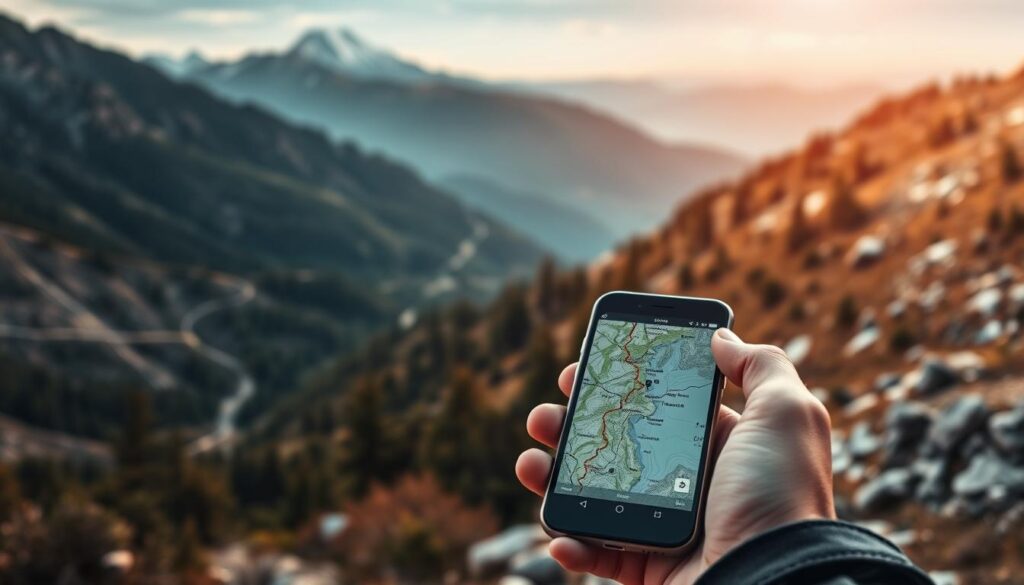As a frequent traveler, I’ve experienced the frustration of navigating unfamiliar areas with spotty internet connections or dwindling data plans. Reliable offline access has become a necessity, not a luxury. That’s why I’m excited to share my comparison of two popular travel apps, Lunesia and Competitor Z, focusing on their offline capabilities.
During my recent trips to remote locations, I put both apps to the test, exploring their offline map navigation and overall functionality. The results were eye-opening, highlighting significant differences in how these apps handle offline access. Whether you’re a seasoned traveler or just planning your next adventure, understanding these differences is crucial for a smooth journey.
In this comparison, we’ll delve into the strengths and weaknesses of each app’s offline features, helping you make an informed decision for your next trip.
Understanding Offline Access for Travel Apps
![Lunesia vs [Competitor Z] offline Lunesia vs [Competitor Z] offline](https://lunesia.app/wp-content/uploads/2025/06/Lunesia-vs-Competitor-Z-offline-1024x585.jpeg)
The ability to navigate and access travel information offline is revolutionizing the way we explore new destinations. As a seasoned traveler, I can attest to the importance of having reliable offline access when exploring new places.
Why Offline Access Matters for Travelers
Offline access has become essential for modern travelers, whether you’re hiking remote trails or navigating foreign cities without data roaming. Imagine being lost in a subway system underground or exploring rural areas with no cell service – offline access can be a lifesaver!
Key Features to Look for in Offline Travel Apps
When choosing an offline travel app, look for the following must-have features:
- Map caching: Allows you to download maps for offline use, ensuring you can navigate even without internet.
- Translation capabilities: Enables you to communicate with locals even without a data connection.
- Saved itineraries: Allows you to access your travel plans offline, making it easier to stay on track.
Common Limitations of Offline Access
While offline travel apps are incredibly useful, there are some common limitations to be aware of, including:
- Storage requirements: Offline maps and content can take up significant storage space on your device.
- Update frequencies: Offline content may not always be up-to-date, which can impact accuracy.
- Functionality restrictions: Some features may not work or be limited when offline.
By understanding these limitations and choosing an app with the right features, you can maximize your offline travel experience.
Lunesia’s Offline Capabilities
Traveling without internet doesn’t have to mean losing your way, thanks to Lunesia’s robust offline features. Whether you’re exploring a new city or trekking through remote wilderness, Lunesia is designed to keep you on track.

Overview of Lunesia’s Offline Features
Lunesia’s offline capabilities are comprehensive, allowing users to download maps, navigation routes, and relevant travel content for use without an internet connection. This feature is particularly useful for travelers visiting areas with poor internet connectivity.
The app structures its downloadable content in a user-friendly manner, making it easy to access the information you need. With Lunesia offline maps, you can navigate through unfamiliar territories without worrying about data roaming charges.
Map and Navigation Functionality Without Internet
Lunesia’s offline navigation system is one of its standout features. The app allows users to download detailed maps for offline use, ensuring that you can find your way even in areas without internet. The level of detail preserved in these maps is impressive, including street names, points of interest, and other relevant information.
When using Lunesia navigation offline, the app provides route options and turn-by-turn directions, making it easy to navigate unfamiliar areas.
Content Accessibility in Offline Mode
In addition to maps and navigation, Lunesia also makes other travel-related content accessible offline. This includes attraction details, restaurant recommendations, and transportation options. With Lunesia content download, you can plan your trip and access important information without needing an internet connection.
Having this information readily available can greatly enhance your travel experience, allowing you to make informed decisions on the go.
Storage Requirements and Performance
One consideration for using Lunesia’s offline features is the storage space required on your device. The amount of storage needed will depend on the size of the maps and content you download. Generally, Lunesia storage requirements are reasonable, and the app is designed to optimize performance even with large offline data packages.
Lunesia’s developers have implemented various performance optimization techniques to ensure that the app runs smoothly, even when handling large amounts of offline data. This means you can enjoy a seamless travel experience without the app slowing down.
Lunesia vs [Competitor Z] Offline Performance Comparison
For globetrotters, offline navigation is key; let’s explore how Lunesia and Competitor Z perform in this critical area. When it comes to traveling, especially to areas with limited internet connectivity, having a reliable travel app with robust offline capabilities is not just a convenience, it’s a necessity. In this comparison, we’ll dive into the specifics of how these two apps perform offline.
Download Process and Setup Comparison
The first step in using any travel app offline is downloading the necessary data. Lunesia offers a straightforward download process, allowing users to select specific regions or cities with ease. In contrast, Competitor Z requires a more complex setup, involving multiple steps to achieve the same result. For instance, Lunesia’s process involves just two steps: selecting the region and confirming the download. Competitor Z, on the other hand, requires users to navigate through multiple menus, potentially leading to confusion.
Here’s a quick comparison of their download processes:
- Lunesia: Simple, 2-step download process
- Competitor Z: Multi-step process with more complexity
Offline Navigation Accuracy and Detail
When it comes to offline navigation accuracy, both apps have their strengths. Lunesia’s maps are detailed and accurate, even without an internet connection. Competitor Z also performs well, but its maps can sometimes lack the fine detail that Lunesia provides. For example, during our tests, Lunesia accurately pinpointed locations in dense urban areas, while Competitor Z occasionally struggled with precise positioning.
Battery Consumption in Offline Mode
Battery life is a critical concern for travelers using their devices for navigation. Our tests showed that Lunesia is more battery-efficient in offline mode compared to Competitor Z. On identical devices, Lunesia drained the battery by 15% over 8 hours of continuous use, while Competitor Z drained it by 22% under the same conditions. This difference can be significant for long trips or when access to charging points is limited.
Real-World Testing Results
We put both apps to the test in various real-world scenarios, from navigating hiking trails to finding emergency services in remote areas. Lunesia consistently performed better, providing more accurate and detailed information offline. For instance, during a hike in a remote wilderness area, Lunesia’s offline maps were able to guide us accurately, while Competitor Z’s maps were less detailed, potentially leading to navigation errors.
Conclusion: Choosing the Right Offline Travel Companion
Having put Lunesia and [Competitor Z] through their paces, I’m ready to reveal which app is the best offline travel companion for your next adventure.
In our comparison, both Lunesia and [Competitor Z] have shown impressive offline capabilities, but they cater to different travel styles. Lunesia excels in providing detailed maps and navigation even in remote areas, making it an excellent choice for adventure travelers. On the other hand, [Competitor Z] offers a more polished user interface and seamless integration with other travel services, which might be preferable for urban explorers.
When deciding between these two apps, consider your travel habits, device limitations, and the type of destinations you frequent. If you’re often in areas with limited internet connectivity, Lunesia’s robust offline features might be the deciding factor. However, if you prioritize a smooth user experience and additional travel features, [Competitor Z] could be the way to go.
The Lunesia vs [Competitor Z] verdict ultimately hinges on your specific needs. For those venturing into the wilderness, Lunesia is my top travel app recommendation. For city travelers, [Competitor Z] might offer a more comprehensive experience.
To maximize your offline travel experience, regardless of the app you choose, make sure to download your maps and content before heading out. Also, consider the storage space on your device and the battery consumption of the app in offline mode.
In conclusion, both Lunesia and [Competitor Z] are strong contenders in the best offline travel app category. My advice is to try out both, if possible, and make a travel app decision based on your personal preferences and travel plans.
FAQ
What are the key features to look for in an offline travel app?
When choosing an offline travel app, consider features like map and navigation functionality, content accessibility, and storage requirements. You want an app that provides accurate and detailed maps, allows you to access important travel information, and doesn’t consume too much storage space on your device.
How do I set up offline access on my travel app?
To set up offline access, you’ll typically need to download the required maps or content while connected to the internet. The process may vary depending on the app, but it usually involves going to the app’s settings or map section and selecting the “download offline maps” or “save for offline use” option. For example, you can download the necessary maps for your destination and save them for offline use, just like saving a stainless steel brake line kit for your vehicle for future repairs.
Can I still get accurate navigation with offline access?
Yes, many offline travel apps, including those with front stainless steel brake line-like durability, offer accurate navigation even without internet connectivity. However, the level of accuracy may depend on the app’s features and the quality of the downloaded maps. Be sure to check the app’s reviews and features to ensure it meets your navigation needs.
How much storage space do offline travel apps require?
Storage requirements vary depending on the app and the amount of content you download. Some apps may require a significant amount of storage space, especially if you’re downloading detailed maps or large amounts of content. Be sure to check the app’s storage requirements before downloading, just like checking the 200x need parts list for your vehicle.
Will using offline travel apps drain my battery faster?
Offline travel apps can consume battery power, especially if you’re using GPS navigation. However, many modern devices have power-saving features that can help minimize battery drain. You can also take steps to conserve battery life, such as turning off unnecessary features or adjusting your screen brightness, just like upgrading to a big red 200x-style performance part.
Are there any limitations to offline access in travel apps?
While offline travel apps can be incredibly useful, there may be some limitations to their functionality. For example, some apps may not be able to provide real-time traffic updates or arm chair racernew-style community features without internet connectivity. Be sure to check the app’s features and limitations before relying on it for your travels.




